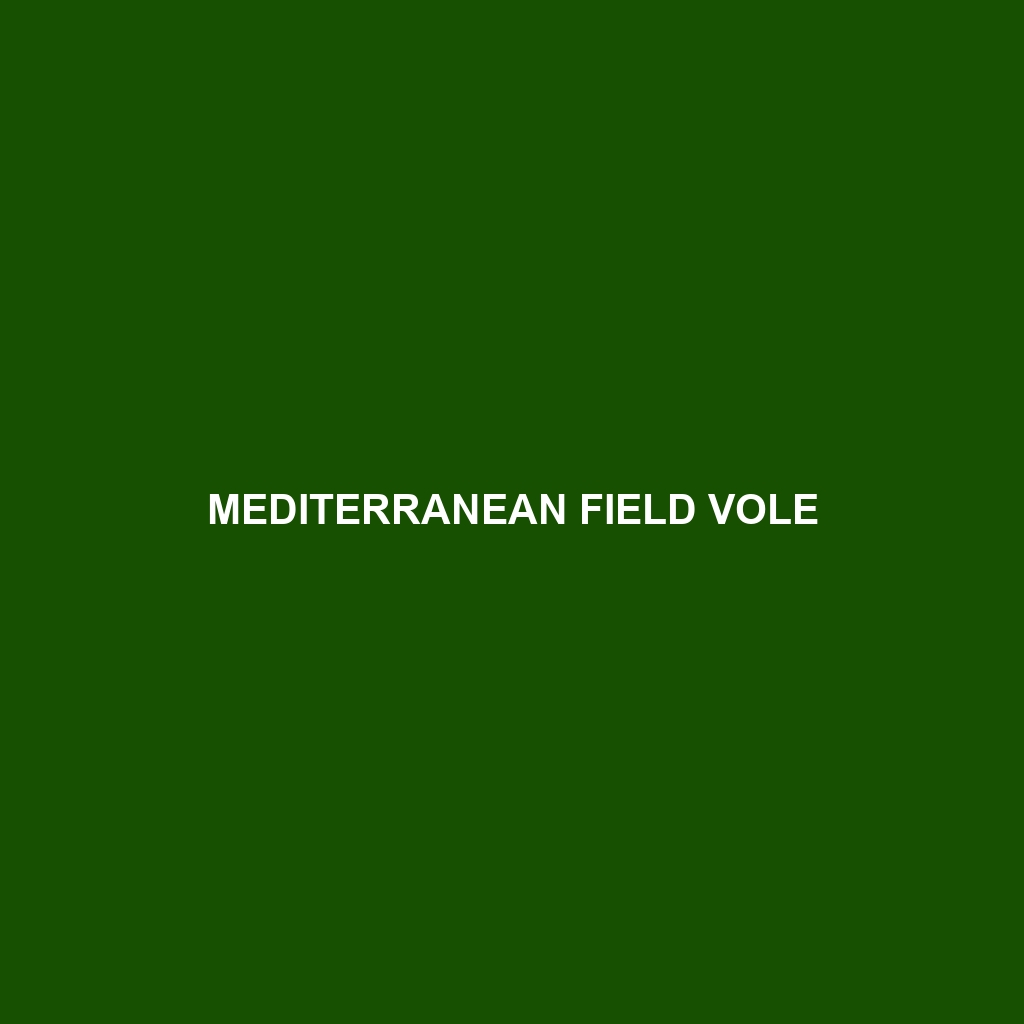Mediterranean Field Vole: A Comprehensive Species Description
Common Name: Mediterranean Field Vole
Scientific Name: Microtus mediterraneus
Habitat
The Mediterranean Field Vole is primarily found in various regions across southern Europe, specifically in Mediterranean countries such as Spain, Italy, and Greece. It thrives in a range of environments, including grasslands, scrublands, and agricultural fields, particularly favoring areas with dense vegetation where it can find shelter and food.
Physical Characteristics
This small rodent typically measures about 10 to 15 cm in body length, with a tail length of 3 to 5 cm. The Mediterranean Field Vole exhibits a robust, cylindrical body covered in soft fur that ranges from brown to greyish hues, with paler undersides. Its short legs and small ears are characteristic features, while its slightly flattened skull distinguishes it from other voles.
Behavior
The Mediterranean Field Vole is primarily nocturnal, exhibiting peak activity during dusk and dawn. It is known for its burrowing habits, creating extensive tunnel systems that provide safety from predators. Socially, these voles often live in colonies, showcasing a range of behaviors from solitary foraging to group nesting during colder months.
Diet
The diet of the Mediterranean Field Vole consists mainly of grasses, leaves, roots, and seeds, indicating a herbivorous lifestyle. They are particularly fond of cereal crops, which can make them significant pests in agricultural settings. Their feeding habits vary with the seasons, focusing on fresh green shoots in spring and storing seeds during the autumn months.
Reproduction
Breeding typically occurs between March and September, with females capable of producing several litters each season. Each litter usually consists of 4 to 6 young, which are born blind and hairless, requiring careful nurturing. Weaning occurs at about three weeks, with juveniles maturing rapidly to begin reproducing within months.
Conservation Status
The Mediterranean Field Vole is currently classified as “Least Concern” by the IUCN Red List. However, habitat loss due to agricultural expansion and urban development poses potential threats to local populations, warranting ongoing monitoring and habitat conservation efforts.
Interesting Facts
One fascinating aspect of the Mediterranean Field Vole is its ability to adapt to various types of terrain, from coastal areas to mountainous regions. Additionally, these voles have a high reproductive rate, which can lead to population booms, making them important prey for various predators, including birds of prey and small mammals.
Role in Ecosystem
As a primary herbivore, the Mediterranean Field Vole plays a crucial role in its ecosystem by influencing plant community dynamics and serving as a food source for many predators. Their burrowing activities also contribute to soil aeration and nutrient cycling, benefiting plant growth throughout their habitats.
